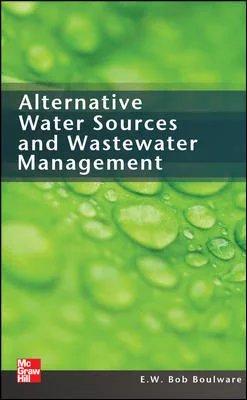Lab Waste Systems
Julius Ballanco, PE
I have received a lot of calls, comments and questions regarding laboratory waste. The interest that has been generated started with the introduction of a new laboratory waste piping system - a CPVC lab waste system. I mentioned to one of the manufacturers that they didn't need to limit their product to lab waste. Technically they can use the piping system for any waste. The response was, “Why would someone want to pay a higher price for a CPVC piping system for drainage, when PVC is cheaper?”
My comment to that was, “Let the customer decide.” Cost has never been the only factor in selecting a piping material. If it were, there wouldn't be any cast iron installed any longer. After all, plastic pipe has always been less expensive than cast iron.
The introduction of CPVC laboratory waste pipe raised more questions regarding special waste systems. The plumbing codes already have been weak when it comes to regulating special waste systems. The code basically says that when you have a special waste system, you need to provide piping material that is compatible with the special waste. This type of code language sort of leaves you hanging. The first question becomes, “Who is responsible for determining what pipe is acceptable?”
Decisions, Decisions
For the most part, the plumbing engineer should be specifying the material to be used for a lab waste system. The engineer is required to fully analyze the system, determine the concentration of chemicals that will be present, and specify the acceptable piping material to be used.Quite often, the engineer provides options for the contractor. I have seen plans that required the contractor to establish the concentration of chemicals that are to be present and select a material that is compatible. If you think this is shirking their responsibility, in a way, it is. A normal way to respond is to identify the material you have selected and get the engineer to sign off on the material. The sign-off must be in writing from the engineer.
There are other times when the engineer is provided the wrong information regarding the concentration of chemicals that will be present in the piping system. You may have more accurate information regarding the discharge. You can use that information to determine a more appropriate piping material for the lab waste. Again, get the engineer to sign off on the change.
Another possibility that exists is that the engineer may have a standard spec that lists a particular material. You may bid the project and realize that a different piping material may be used. Often, it is a lower-cost material. Submit your recommendation to the owner and the engineer, and get the engineer to sign off on the change.
You see the constant theme - you always throw it back to the engineer. The ultimate authority for specifying piping material is the engineer. Make it his liability, not yours.
Not Just Any Pipe
As for the material selection, there is no universal piping material that works for every chemical waste system. Some pipe companies may lead you to believe that their pipe can be used everywhere. Not true. The common piping materials used in lab waste systems include polypropylene, PVDF, fiberglass, duriron and stainless steel. Add to that list the newer CPVC lab waste pipe. But, don't forget that some lab wastes can be piped in PVC, ABS, copper or cast iron. Basically, any piping material may be used in a lab waste. The determining factor for the material is the concentration of chemicals that are anticipated in the waste stream.There is no denying that certain piping materials are resistant to more chemicals than others. For example, there is a longer list of chemicals that polypropylene can resist than there is for CPVC. Similarly, there is a longer list for PVDF than polypropylene. But, then again, there are arguments regarding this.
What each pipe manufacturer provides is the chemical resistance list that identifies the acceptable exposure of a given concentration of various chemicals. These lists are often available on the company Web site. This is what you should be consulting to determine the acceptable material to install.
The acceptable concentration of chemicals for CPVC also appears on the Noveon Web site, www.noveon.com. Noveon is the manufacturer of the CPVC resin that is used by pipe manufacturers to produce CPVC pipe.
The Noveon chemical concentration list also has raised eyebrows regarding other CPVC piping systems. You will find that CPVC lab waste pipe lists a number of chemicals for which the pipe is resistant. Included on the list are 50 percent concentration of ethylene glycol and 25 percent concentration of propylene glycol. These two chemicals are often used as antifreeze solution for fire sprinkler piping systems. However, CPVC Blazemaster sprinkler pipe requires the antifreeze solution to be glycerine only.
Contractors have sometimes inadvertently installed ethylene glycol or propylene glycol in CPVC Blazemaster sprinkler piping systems. Seeing the chart of acceptable chemicals, they question whether their mistake can be corrected without replacing the entire piping system.
The company position by the Blazemaster pipe manufacturers and Noveon is consistent - no, you cannot install ethylene glycol in Blazemaster sprinkler piping systems. They may go as far as to suggest that any Blazemaster pipe exposed to ethylene glycol must be replaced. It is appropriate that they stick with this company line. The listing of Blazemaster sprinkler pipe requires that only glycerine be used. They cannot vary from their listing; otherwise, they could lose their listing.
Check out the CPVC lab waste piping system. You may find it useful for a future project requiring special waste piping systems. Just remember to be within the allowable limits for chemical concentration no matter which piping material is installed.
Looking for a reprint of this article?
From high-res PDFs to custom plaques, order your copy today!






